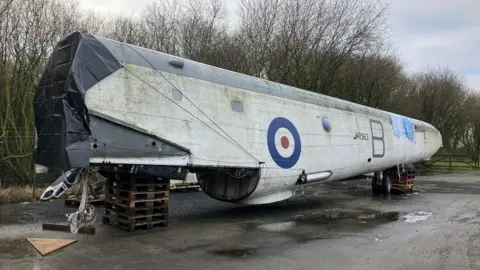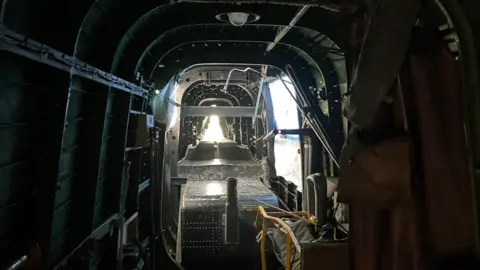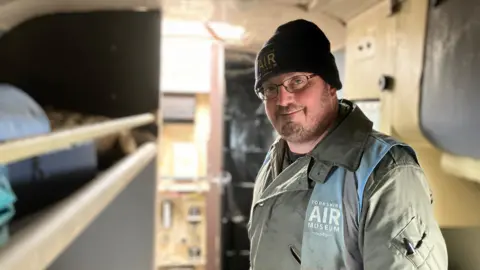Submarine tracking aircraft arrives at museum
 BBC
BBCA 70-year-old aircraft used to track Soviet submarines during the Cold War has arrived in North Yorkshire ahead of its restoration.
The Shackleton had to be transported in sections by lorry from Coventry to its new home at the Yorkshire Air Museum in Elvington, near York.
It was used by the Royal Air Force for 40 years up until its retirement in 1991.
Gary Hancock, the museum's aviation conservation manager, said: "It's amazing to have it here. It was a very useful aircraft."
He added: "It was the first aircraft I worked on when I worked at British Aerospace and the way things are going it is going to be the last aircraft I work on before I retire."
The Shackleton has been sectioned into multiple parts, each wheel has been detached, the wings removed and the body of the plane separated into fuselage and cockpit.

The interior of the plane is still in its original condition, with a toilet, leather seats, bunks and a galley kitchen.
It is 27m (88ft) in length and in its heyday could fly for up to 24 hours and cover huge distances.
The plan is for the exterior of the aircraft to be reassembled over the next two to three years, mostly by volunteers. In the future, they hope to also restore the interior.
Graham Buckle is one of the restoration volunteers and said he was very fond of the aeroplane because it had "lots of personality".
He said: "She was used extensively across the British Empire to keep an eye on what was going on in the world.
"Her role was as varied as looking for submarines; looking for sailors; looking for downed aircraft; and then at the end of her career she was a flying radar station."

Mr Buckle was part of the team that had looked after the Shackleton in Coventry since 2010 and he has helped to keep it running.
He has been in the cockpit when the four Rolls Royce engines were fired up.
"It is one hell of a feeling," he said. "You get just a little taste of what it was like for the guys who were here years before us."
The aircraft will be reassembled in the museum's car park because it is too large to fit inside the main hangar. The engines will eventually be reconnected so that they can be "fired up", but there are no plans for it to fly again.
The first stage of the project is expected to be completed within three years.
Listen to highlights from North Yorkshire on BBC Sounds, catch up with the latest episode of Look North or tell us a story you think we should be covering here.
